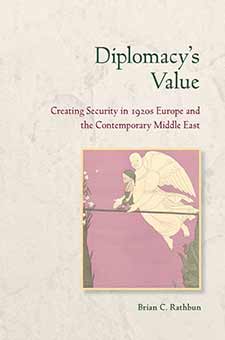Diplomatic Chess Game
The brutal murders of journalists and aid workers by terrorist organizations such al Qaeda and ISIS have thrust the issue of negotiation into the spotlight.
With the rise of the Islamic State in Iraq and Syria — ISIS — the public has watched European prisoners, whose governments will negotiate for their release, go free. It has also grieved over the beheadings of American and British prisoners, whose national leaders refuse to negotiate with terrorists.
“Anytime you have principles involved negotiations become more difficult,” said Brian Rathbun, associate professor of international relations at USC Dornsife. “If we negotiated for at least one of our POWS for a certain number of al Qaeda or Taliban prisoners at Guantánamo Bay, are we essentially validating them as a party?
“By negotiating with them we lend credence to their beliefs and culturally that’s not something the government wants to do. Yet at the same time, there might be tangible gains from negotiating. We get our POWs back. It’s a very difficult question.”
Rathbun has been studying the art, practice and theory of negotiations among states for a number of years. In September, his book, Diplomacy’s Value: Creating Security in 1920s Europe and the Contemporary Middle East, was published by Cornell University Press.
The topic of diplomacy as a research project intrigued Rathbun 10 years ago after his wife Nina was hired to work as a diplomat for the U.S. State Department. He realized, after six years of graduate school at the University of California, Berkeley, “I had absolutely no earthly idea what Nina would be doing.”
When he began his research, he found an enormous gap in scholarly work about diplomacy.
“You would think diplomacy is one of the most studied phenomena in the field of international relations and yet it is practically not studied at all in any systematic way,” Rathbun said. “I thought, well, that’s kind of sad, but it’s also an opportunity for me, personally, to put it on the map.”

Brian Rathbun’s book builds a theory of diplomacy based on negotiation, political ideology and moral values.
In the half-dozen reviews of the literature on diplomacy he found, the scholars complained that no one had studied it and no one knew how it worked.
“They provided a few requisite quotes from diplomats who claimed that their brilliant skill was simply intuitive and inexplicable and then went on to a list of the various functions of a diplomat — smiling at cocktail parties, acting pretentious and so on,” Rathbun wrote in his book’s preface.
First, Rathbun had to understand that diplomacy was different from foreign policy. Diplomacy is not the formulation of foreign policy interests. It is the pursuit of them without recourse of force.
“In the broadest sense, diplomacy is the nonviolent resolution of conflicts through a process of communication and negotiation,” he said. “But the point that I make is that there are many different styles of diplomacy. So just saying that you want to resolve disputes without violence doesn’t mean that you might not use leverage, coercion, lies and duplicity.”
Another diplomatic style is committed to an honest, open exchange of ideas and arguments.
“This is somewhat rare in international relations, but I think it does happen,” he added.
Or, a state may be completely self-interested, but simultaneously realize the fate of its nation and that of other nations is intertwined.
“So essentially, to satisfy the other side is something in your interest,” he said. “It’s a more pragmatic, less genuine style of diplomacy yet at the same time it’s very important in international relations to enable governments to reach some kind of successful negotiation outcome.”
Because diplomacy has been particularly lacking in theory, Rathbun builds a theory of diplomacy based on negotiation, political ideology and moral values.
The book highlights Europe in the 1920s, when France was preoccupied with security and terrified of Germany.
“This period in European history was the last and best chance France and Germany in particular had for creating a reconciliation that could have prevented the Second World War,” Rathbun said. “It was the period of history that France and Germany came closest to reaching a modus vivendi, a way of living together that could have laid the foundation for a more permanent peace between the two of them. Of course it wasn’t successful.”
The period that may have prevented World War II is what motivated Rathbun to take a closer look at diplomacy.
Most historians studying what could have prevented WWII focus on the 1930s. In 1938, Adolf Hitler, Benito Mussolini, French Premier Edouard Daladier and British Prime Minister Neville Chamberlain signed the Munich Pact, which handed over Czechoslovakia to Germany in the name of peace. Upon return to Britain, Chamberlain declared that the meeting had achieved “peace in our time.”
“I’ve always been interested in conflict and the biggest conflict in war of course was WWII,” Rathbun said. “You can focus on British Prime Minister Neville Chamberlain and whether he should or should not have appeased Hitler, but there was another time in which Chamberlain’s brother, Austen, came close to reconciling Germany to its post-World War I reality.”
This was 15 years prior to WWII, Rathbun noted.
“It didn’t receive a lot of historical, political science or international relations attention. Everyone focuses on the immediate decision-making, the appeasement process and the inability to stop Hitler, but even before Hitler came on the scene there was a possibility to forestall his rise by creating the conditions of peace in Europe, by making enough concessions to Germany that would have enabled it to buy into the post-WWI order as an equal participant.”
In the end, “Negotiation and diplomacy might not work, but it rarely hurts to try,” Rathbun said. “Sometimes, though, sitting down is the hardest part.”